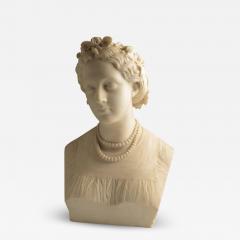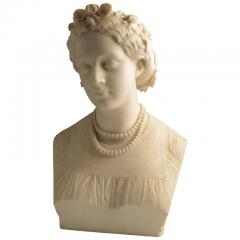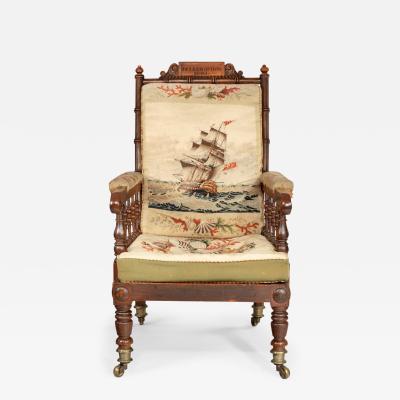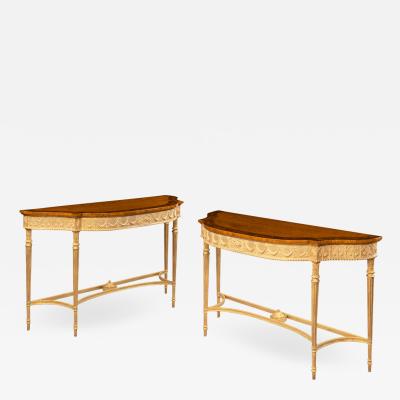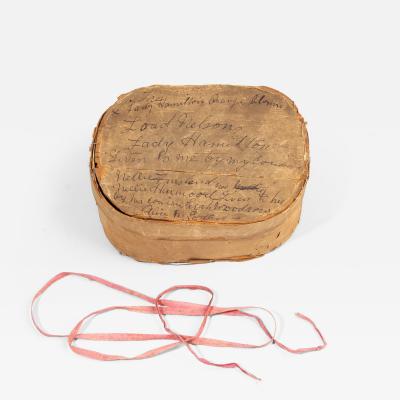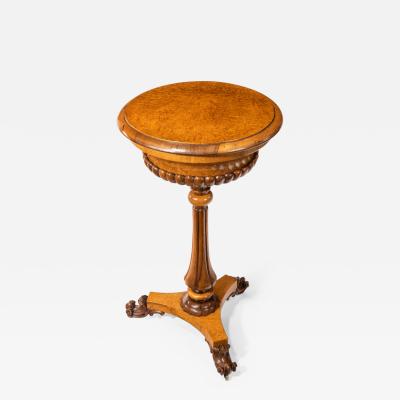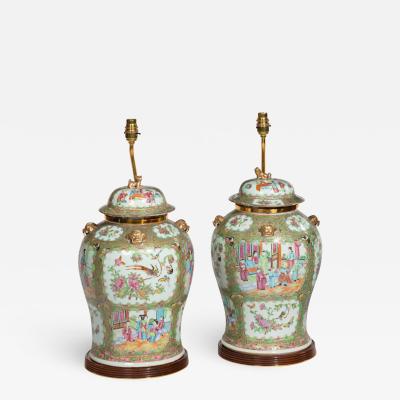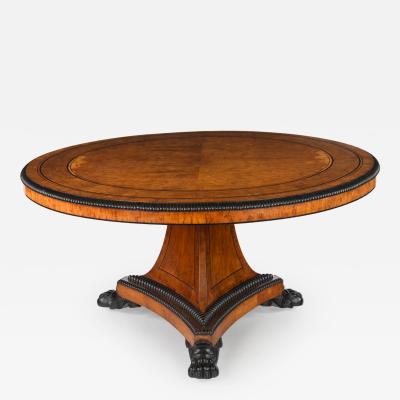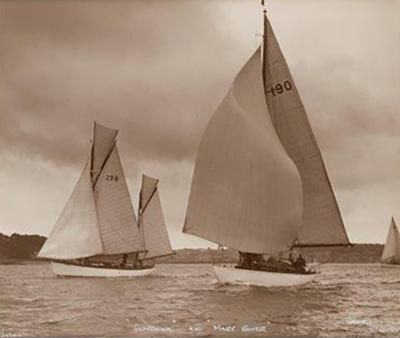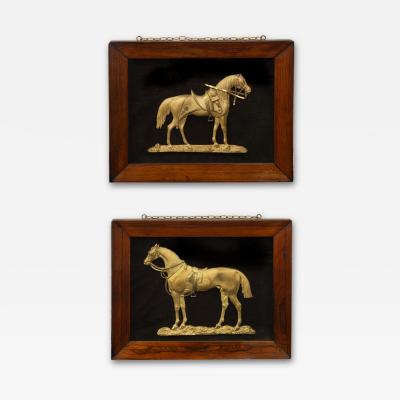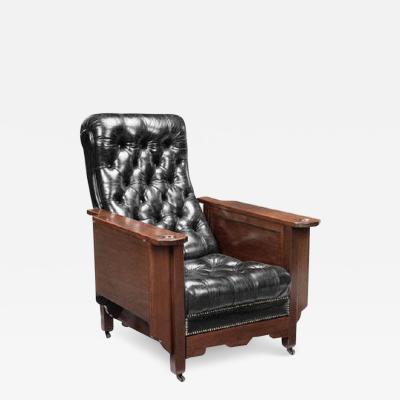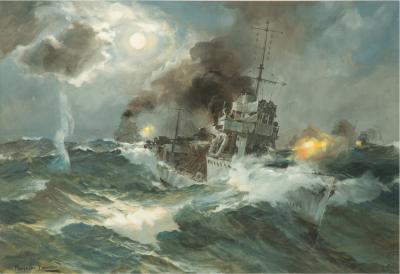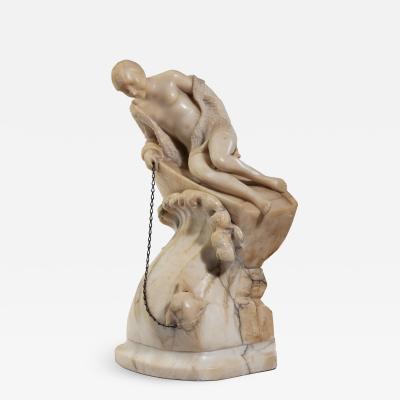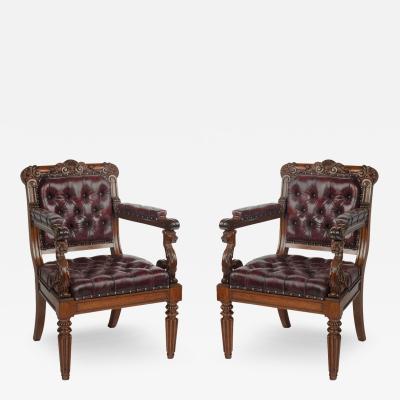Marble bust of a young lady as Flora by John Adams-Acton
-
Description
Marble Bust of a Young lady as Flora by John Adams-Acton (English, 1830-1910)
Signed and dated: JOHN ADAMS-ACTON FECT ROMA 1864 with inscription ELLEN A. HALL
White Marble
Provenance: Adams-Acton won the Royal Academy’s Gold Medal for sculpture in 1858 and his prize was to study in Rome under John Gibson, the important British Neoclassical sculptor. This bust of a young lady as Flora, Roman goddess of flowers and the Spring, was probably executed by Adams-Acton in Gibson’s studio in Rome, where he spent a successful period making portraits of Grand Tour patrons. The inscription, ‘Ellen A. Hall’, is probably the name of the sitter, who was most likely a young British tourist in Rome. Adams-Acton exhibited regularly at the Royal Academy from 1854 until 1892, where his sitters included William Gladstone, Charles Dickens and Pope Leo XIII.
An Exceptional marble portrait bust of the diarist and traveller Ellen Hall by the sculptor John Adams-Acton, executed in Rome in 1864
An Exceptional marble portrait bust of the diarist and traveller Ellen Hall by the sculptor John Adams-Acton, executed in Rome in 1864
Ellen, along with her sisters Louisa and Emily, moved to Ravenswood House in West Wickham, Kent, in 1842. They had previously spent many years in St Helier in Jersey. Ellen and Emily were extremely keen diarists and have left many records relating to their fascinating lives. They travelled widely and moved in some interesting circles, leading to them coming in to contact with the sculptor John Adams-Acton whilst in Rome. The sisters’ diaries are preserved in the Historical Collections department. of Bromley Library and Ellen writes of her visit to the sculptor that, on the 4th of February 1864 (page 259 in the diary):
“Went to Adams Studio and bought the little (illegible) bust. At Emily’s desire he will take a bust of me, which if it gives her any pleasure will not be money thrown away as I feel it to be myself. It will be £100 altogether, the little bust and myself. I like the man’s faces”.
This account also makes it very clear that the purchaser of the piece was to be Ellen’s sister Emily.
Later, on the 12th of February according to Ellen’s diary (page 269) she returned to the sculptor’s studio for her first sitting:
“The day was beautiful and I yet managed to go to Mr Adams and give him a long sitting…We chatted away as I was sitting but I began by being “furious” with him, telling him if anyone said to me “I understand you are sitting to Mr Adams” I should never come near the studio again”.
This latter comments relates to the fact that Ellen had been shown other portraits by Adams-Acton that were in the process of being finished and she was light-heartedly making it clear to the sculptor that she didn’t want her likeness to be shown to strangers. This also helps to make clear the Hall sister’s relationships with artistic figures in Rome during this period. They were clearly quite prominent patrons and connoisseurs.
In the spring of 1864, Emily and Ellen also both sat for the portrait painter G.B. Canevari.
Selections from the ladies’ diaries have since been published as memoirs, entitled the Halls of Ravenswood and Two Victorian Ladies
It is fascinating to have such detailed accounts of the lives of young women of the period.
John Adams-Acton
Adams-Acton won the Royal Academy’s Gold Medal for sculpture in 1858 and his prize was to study in Rome under John Gibson, the important British neoclassical sculptor. This bust of Ellen C. Hall was executed by Adams-Acton in his studio in Rome, where he spent a successful period making portraits of Grand Tour patrons. Adams-Acton exhibited regularly at the Royal Academy from 1854 until 1892, where his sitters included William Gladstone, Charles Dickens and Pope Leo XIII. He also executed sculptures of numerous aristocrats and members of the British Royal family with Edward VII in particular sitting for him on multiple occasions.
Literature: B. Read, Victorian Sculpture, Yale University Press, 1983
With particular thanks to Kate Bond at Bromley Historic Collections who helped to pinpoint relevant sections in the Ellen Hall diaries for us to examine. - More Information
-
Dimensions
H. 55.12 in; H. 140 cm;
Message from Seller:
Wick Antiques, established by Charles Wallrock in the early 1980s, specializes in fine antiques with a reputation built on extensive knowledge and long-standing relationships, including with Harrods. Contact Charles at 44.159.067.7558 or via email at charles@wickantiques.co.uk for exceptional pieces curated by a team with expertise in Islamic, Japanese, and fine works of art.
















